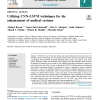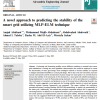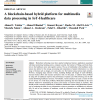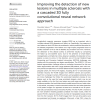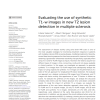—In the field of molecular chemistry, the functions, interactions, and bonds between proteins depend on their tertiary structures. Proteins naturally exhibit dynamism under different physiological conditions, as they alter their tertiary structures to accommodate interactions with other molecular partners. Significant advancements in Generative Adversarial Networks (GANs) have been leveraged to generate tertiary structures closely mimicking the natural features of real proteins, including the backbone and local and distal characteristics. Our research has led to the development of stable model RODWGAN, which is capable of generating tertiary structures that closely resemble those found in nature. Four key contributions have been made to achieve this goal: (1) Utilizing Ratio Of Distribution (ROD) as a penalty function in the Wasserstein Generative Adversarial Networks (WGAN), (2) Developing a GAN network architecture that fertilizes the residual block in generator, (3) Increasing the length of the generated protein structures to 256 amino acids, and (4) Revealing consistent correlations through Structural Similarity Index Measure (SSIM) in protein structures with varying lengths. These model represent a significant step towards robust deep-generation models that can explore the highly diverse set of protein molecule structures that support various cellular activities. Moreover, they provide a valuable source of data augmentation for critical applications such as molecular structure prediction, inpainting, dynamics, and drug design. Data, code, and trained models are available at https://github.com/mena01/Generating-Tertiary-ProteinStructures-Resembling-Nature-using-Advanced-WGAN.
Research Date
Research Department
Research Journal
(IJACSA) International Journal of Advanced Computer Science and Applications,
Research Member
Research Publisher
Science and Information (SAI) Organization Limited
Research Vol
14
Research Year
2023
Research Abstract




